Voted Taiwan’s most popular natural landscape in an online poll conducted in 2013, Yehliu Geopark is one of the jewels in Taiwan’s crown of tourist attractions. Its other attribute is its close proximity to the rich fishing grounds of the northern coast. This means ready access to an abundance of fresh seafood.
It rains a lot in this part of Taiwan – about 3,755 millimeters (148 inches) a year with only about 100 days of sunshine. When I visited in March 2015, it had been raining for six days without a break. Nevertheless, it’s a beautiful place rain or shine.
Located just 40 kilometres from Taipei, the park occupies a fragile limestone cape stretching 1700 metres into the East China Sea. Just 300 metres across at its widest point, Yehliu is home to a stunning array of curious, yet creative, rock formations.
The combined and constant effect of wind, waves, tides and typhoons that batter and nibble away at the thin sliver of land has sculpted a geological landscape that seems otherworldly.
The most popular rock stars have been named according to their physical likeness to objects or people. An illustrated brochure available at the park entrance helps visitors locate and interpret them. Names such “Mushroom Rocks,” “Sea Candles,” “Fairy Shoe” and the iconic “Queen’s Head” bear an uncanny resemblance to their namesakes. For names that aren’t so obvious, invoke a little imagination to craft your own titles for these exquisite works of art. For the one below, I visualized the barely visible eye of a crocodile lurking under the surface of the water.
Many of the 180 or so mushroom rocks are grouped in a cluster, like a weird stone forest. The brown-topped yellow mushrooms sport stems of various widths. Over time, the stems have narrowed and become less capable of supporting the heavier loads on top. The necks eventually succumb to earthquakes, winds and waves, and the heads tumble to the ground.
Honeycomb rocks are mushroom-shaped, but the surface is covered with sea-eroded holes of different shapes and sizes.
The irregularly shaped blocks scored on the top of the “pineapple bun” inspired its name. To me, it looked more like a turtle seeking shelter in the sanctuary of the sand.
Oozing aesthetic as well as geological appeal, the smooth stone and bowl formations known as “sea candles” are conical in shape.
After the softer sandstone has been scoured away by the ocean, the more resilient rock is left exposed. Rich in calcium carbonate, the ball-shaped core simulates a candlewick.
The softer sandstone surrounding the “peanut rock” has been eroded by seawater to create a depression housing the more resilient peanut-shaped rock rising above it.
Partially exposed fossils litter the landscape. This round fossil chip, a sea urchin imprinted with a petal, was buried by the sand and mud 2200 years ago. Imagine.
Yehliu is a popular stop on the Taiwan tourist circuit, especially with visitors from mainland China. There’s a strong likelihood you’ll be sharing the park with busloads of people who wait in a long line for a photograph beside the “Queen’s Head.” It didn’t help being there on a Sunday, when the park was swimming in tourists. Short of arriving early as soon as the park opens at 8:00 am, be prepared to have strangers invade many of your photographs.
If the throngs get the best of you, or the weather turns foul, just outside the park is a row of restaurants tantalizing customers with promises of freshly caught seafood. If you’re a confessed “seafoodie,” look for the restaurant with a selection of tanks at the entrance containing a plethora of choices. Then, prepare to be overwhelmed.
Our sumptuous feast of tantalizing dishes included crabs, fish, eels, squid, prawns and seaweed.
My favourites were the stir-fried clams in the shell with ginger and scallions, and squid sashimi dipped in wasabi and soya sauce.
Next to the entrance of the park is a local “Gifts from Yehliu” market displaying a rich variety of dried seafood, with plenty of delicious samples available for tasting.
It’s also possible to enjoy a seafood meal from a host of possibilities.
When planning a visit to the Yehliu Geopark, be prepared for summer heat, winter winds and rain throughout the year. The admission price for adults is NT$80 ($2.60 USD).
Getting there
From the Taipei West Bus Station Terminal A, take the Kuo Kuang bus #1815 to “Jin Shan Youth Activity Centre.” The one-way fare for the journey of almost 90 minutes is NT$96 ($3.10 USD). Let the driver know you’d like to get off at the stop for Yehliu, and follow the bus’ progress on the electronic screen. Announcements are in Chinese and English. From the bus stop, the park is a 10-minute walk through the quaint fishing village of Wanli Township. There are convenience stores (7/11 & Family Mart) on the way to purchase drinks and light snacks.
Another option (or for the return trip) is to take the scenic Crown Northern Coastline route via tourist shuttle around the coast from/to Tamsui, the terminus of the Tamsui-Xinyi (red) Line of the Taipei metro. The “hop-on-hop-off” service has a schedule operating at one-hour intervals. The cost of a one-day pass is NT$200 ($6.50 USD).
Have you visited Yehliu Geopark? If you’ve published a post of your experience, or posted pictures on the internet, please include a link in your comments.
Might you be interested in my other posts on Taiwan? If so, check out:
- Discover Asia’s best kept secret: Include Taiwan in your travel plans
- Cycling Taiwan’s Taroko Gorge
- Hiking Taroko’s Old Jhuilu Trail
- Visiting Beitou Hot Springs
- Taipei walking food tour
- Space Inn, Taipei

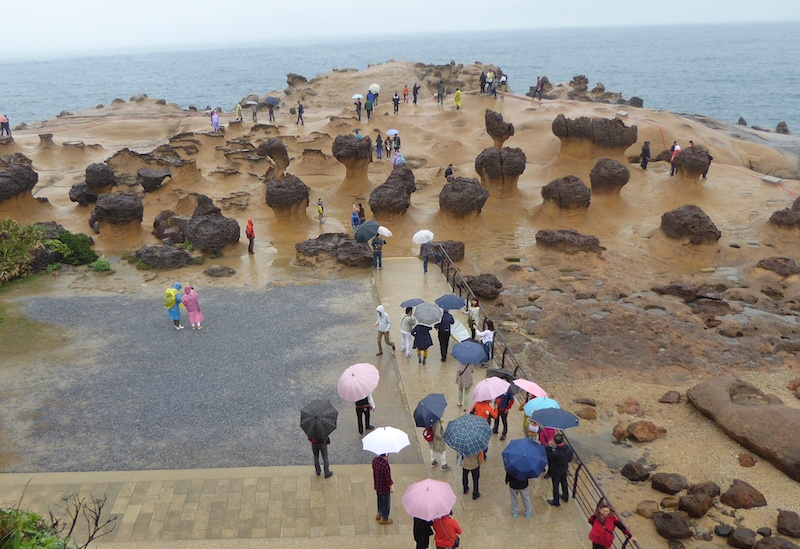
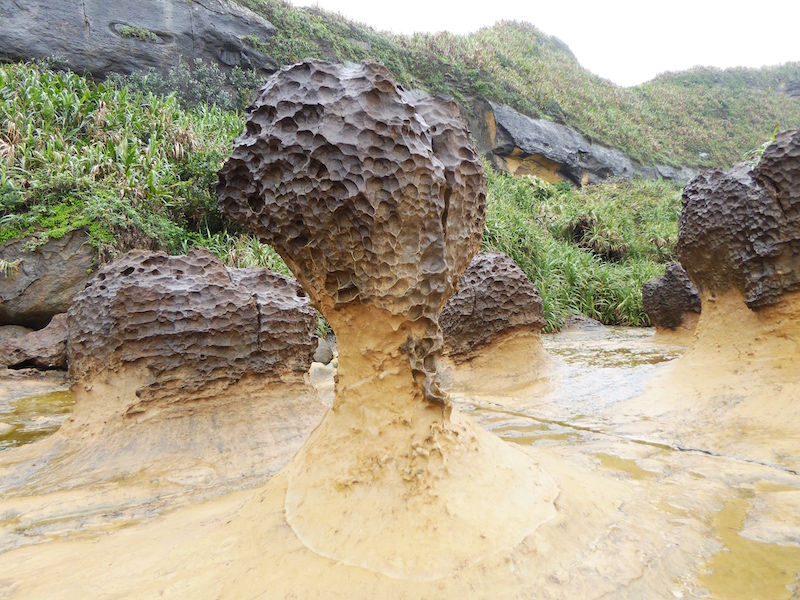
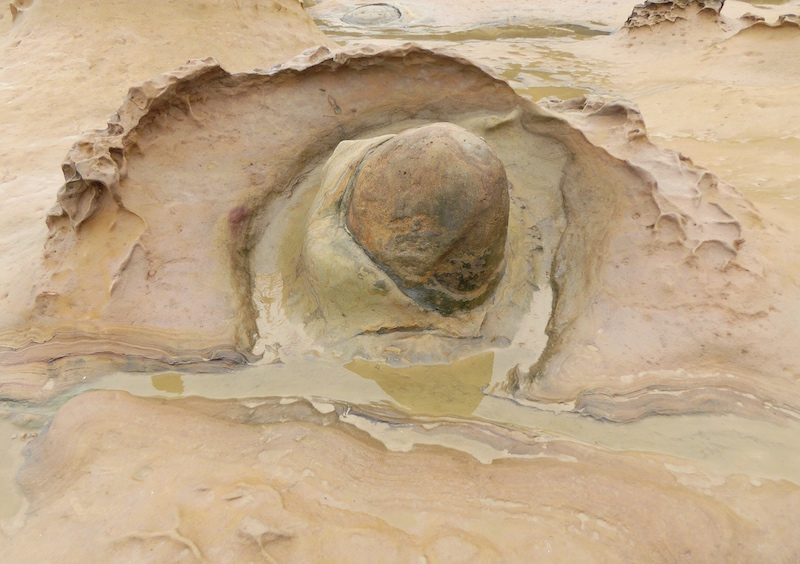
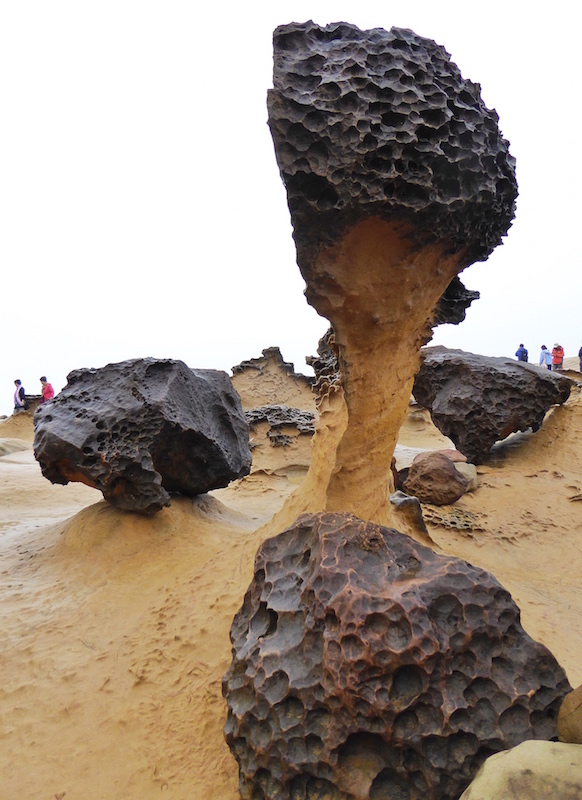
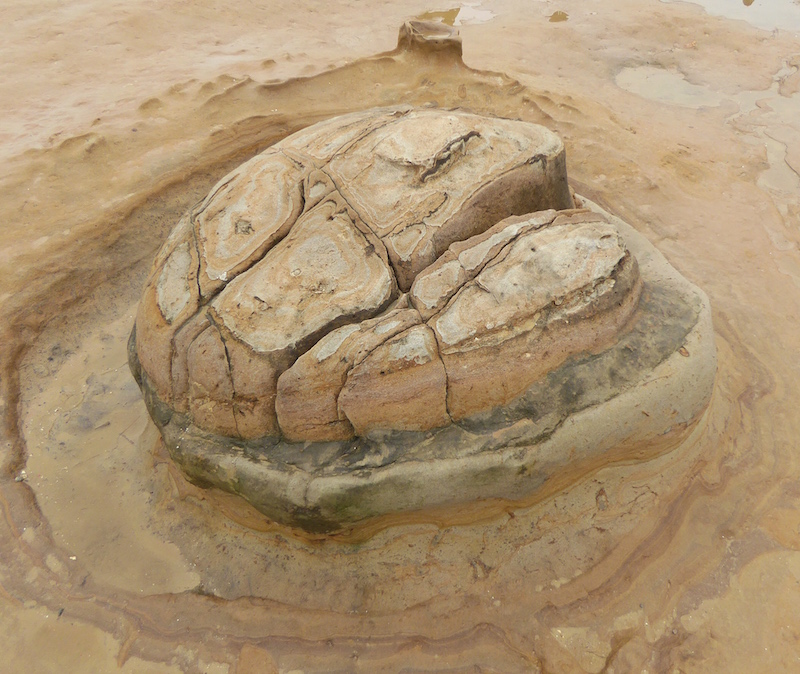

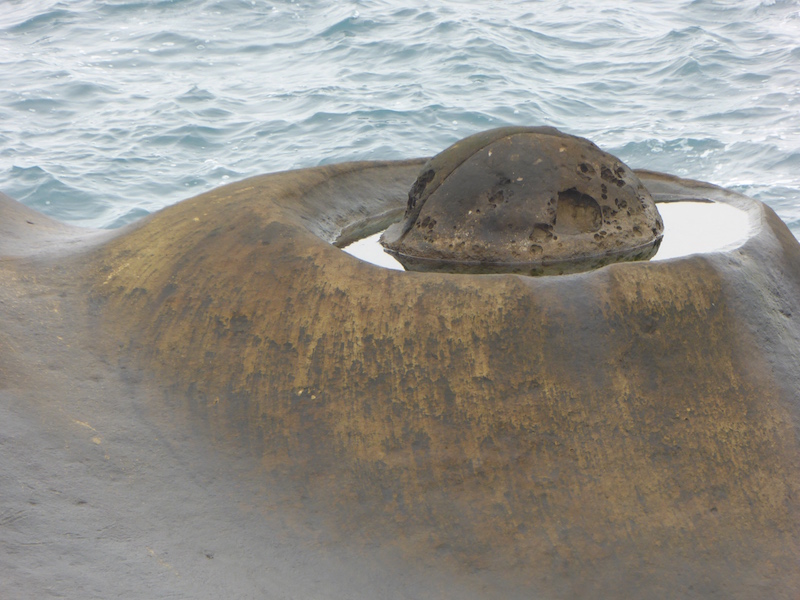
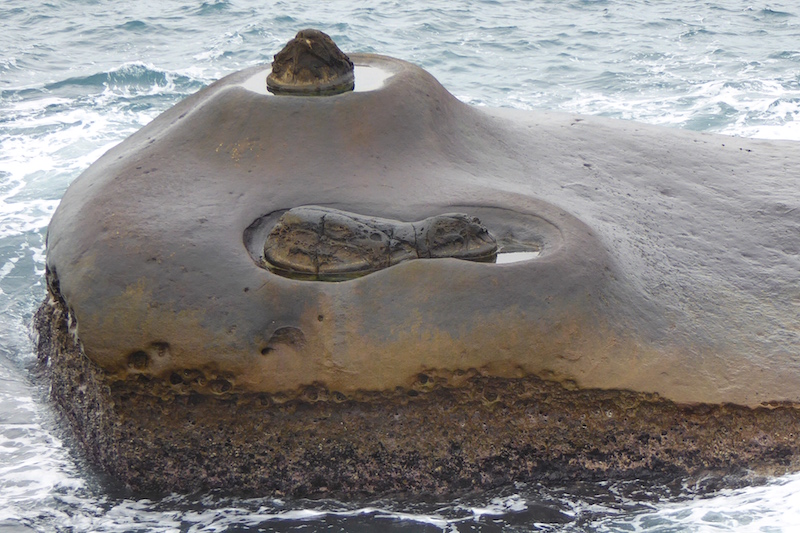
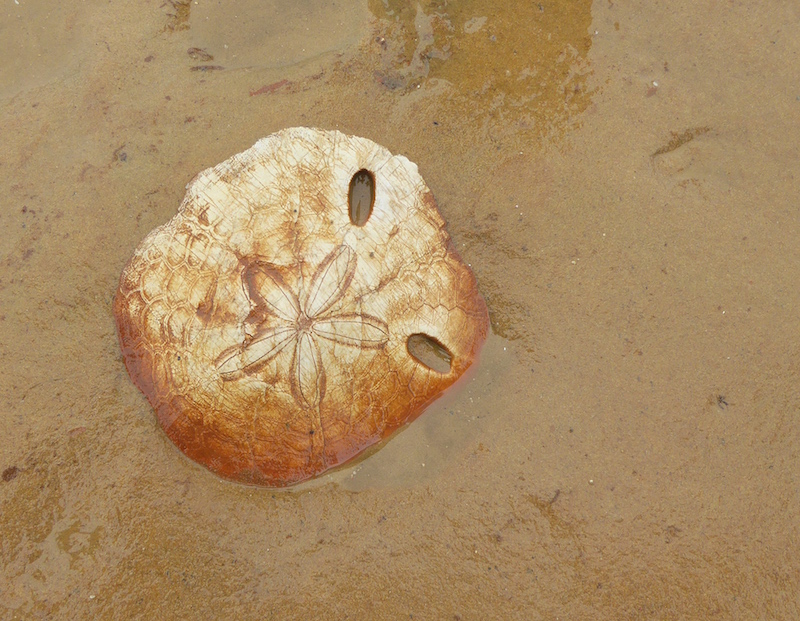
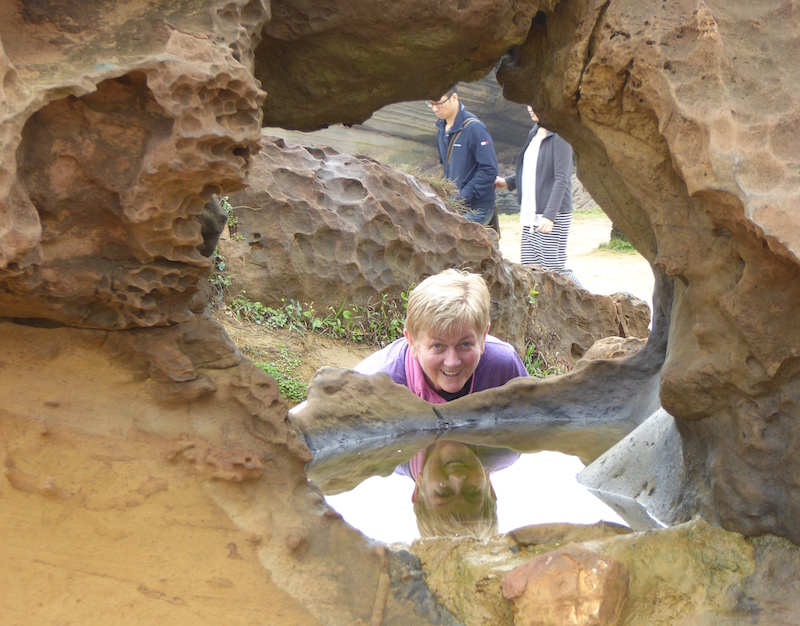
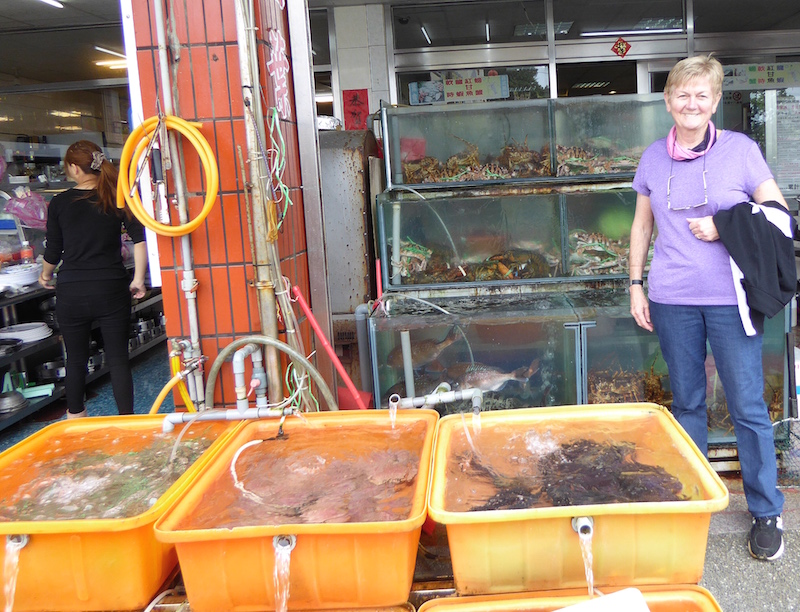

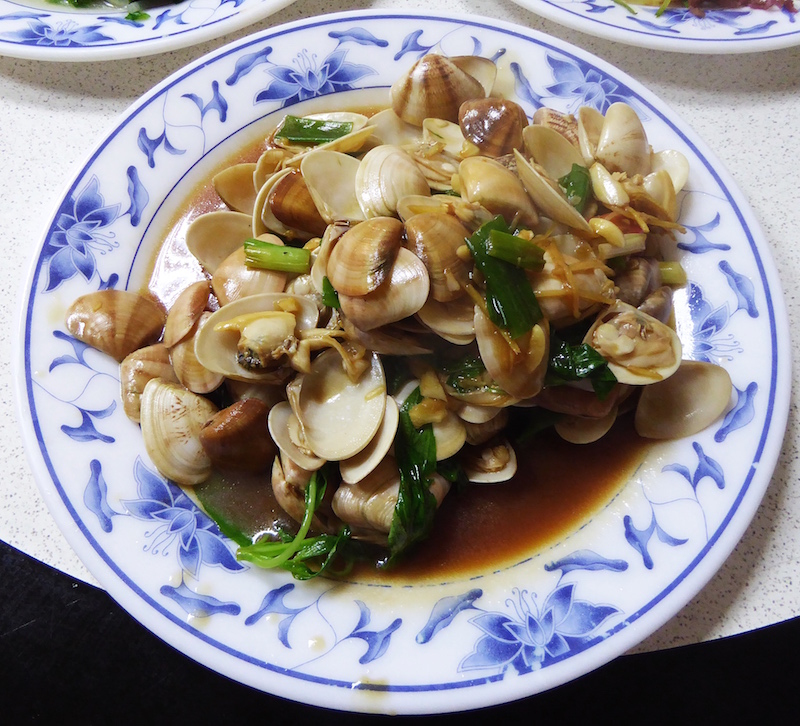
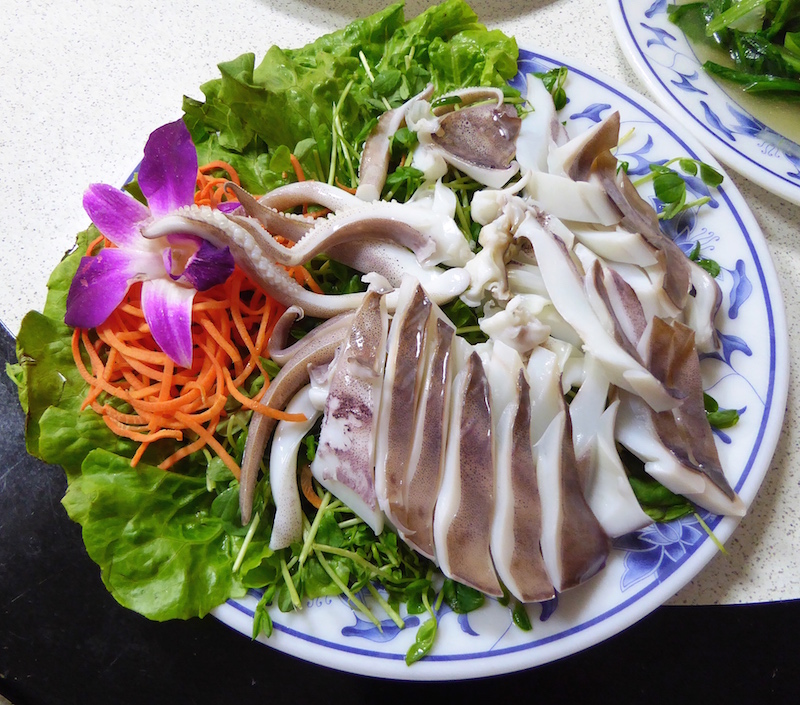
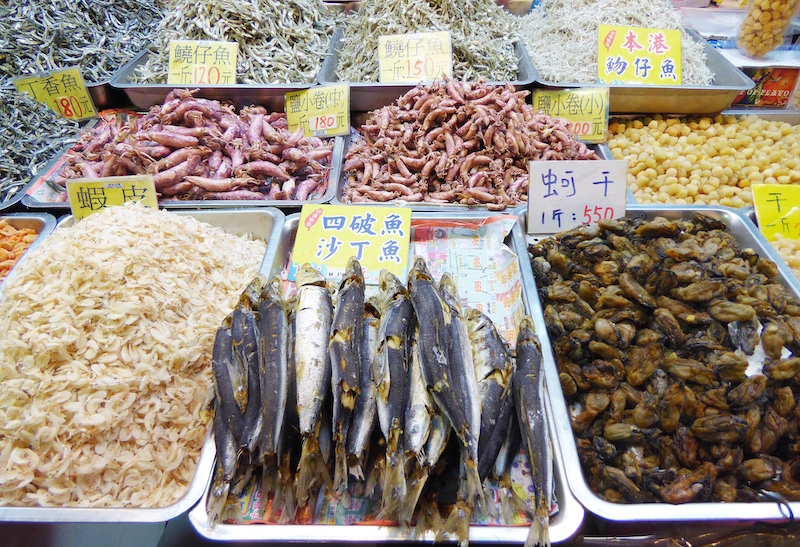
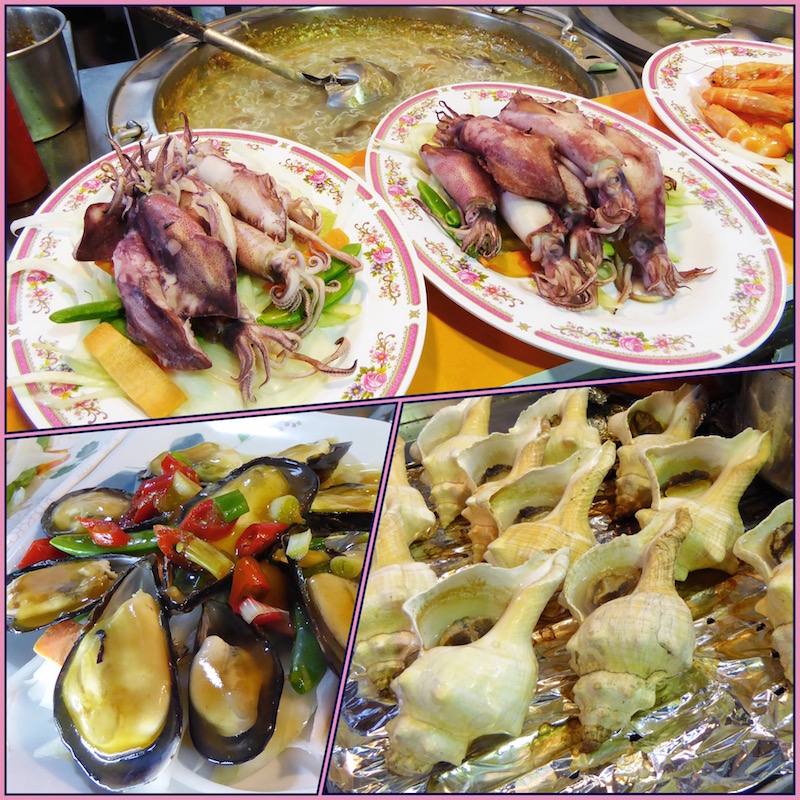




What a treat both to the eyes and senses…We can almost taste and feel the sensational food and environtment….Great Stuff Ann.
Jacqueline
Hi,
Mind telling he how much does the seafood feast cost. Thank you.
Hi Vincent. I’m afraid I can’t comment on the price. A Taiwanese couple were our generous and hospitable hosts, and they ordered and paid for our magnificent feast. Generally speaking, food in Taiwan isn’t expensive.
Anne Betts recently posted…Biking the Golden Gate Bridge